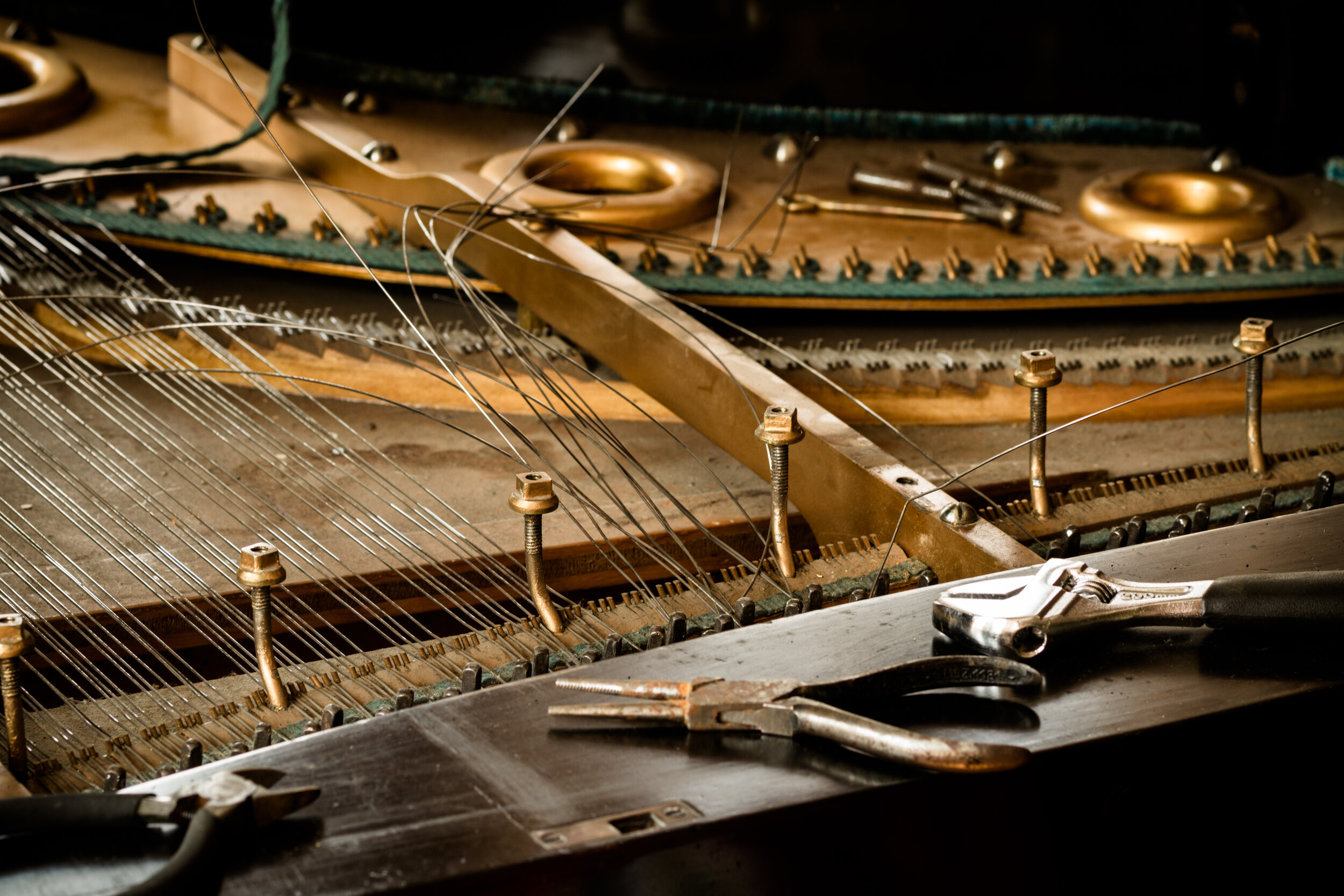Services
Tuning
A standard tuning is $140 and typically takes 1-2 hours, depending on the type, age, and condition of the piano. It is recommended that your piano be tuned at least once a year, not just to keep it at pitch, but also to prolong its lifetime. With regular use it is recommended that your piano be tuned at least twice a year.
Pitch Raises
If your piano has not been tuned for some time it will likely need a pitch raise. In order to bring a piano back up to A440 pitch after it has gone too flat, more than one tuning will be required. Some pianos may be too old to withstand a pitch raise, in which case the piano will be tuned to itself.
Voicing
Voicing is a complex process of adjusting the tone of the piano by fine tuning the relationships between the hammers, strings, and all the contact points between the strings and the piano.
Voicing hammers consists of changing the shape, hardness, or softness of the hammer depending on what the piano needs or the pianist wants. This is done through needling the hammers with special voicing tools, applying a solution for either hardening or softening, filing the hammers to maintain proper shape, and aligning the hammers to hit the strings the right way.
Hammer Filing
Particularly worn hammers will need to be filed down to reduce the grooves made by hitting the strings. Eventually a new set of hammers will be needed, but filing is a good way to postpone the cost of replacing hammers if the hammers aren’t too worn already.
Piano Accessories
I currently install Dampp-Chaser piano dehumidifier systems, as well as string covers. Humidity is a piano's worst enemy, so for a place like Florida these are essential tools for keeping your piano stable and healthy.
The Dampp-Chaser dehumidifier system regulates the humidity in the piano without any noise or water resevoir to empty. It installs under the piano and comes with a humidistat that turns it on and off automatically, so you never have to worry about it.
String covers are essentially a thin wool blanket cut to fit inside your piano under the lid above the strings. They not only serve as a moisture barrier but also help to keep your piano strings, plate, and soundboard clean for as long as the cover is installed.
Regulation/Repair
Regulation is adjusting the little mechanisms in the action of the piano so that the piano plays as it should. It can range from minor adjustments to one or two notes, to a complete overhaul of the entire piano action. All pianos will need regulation at some point in their lifetime, typically about ten years in.
Key Height and Leveling
Over time the felt under the keys and between action parts will become compressed, causing the keys to drop. Since they won’t all drop at the same rate the keys will also begin to stagger, with some being higher and others lower. Adjusting the keys to the right height and making sure they are all the same height is the first step in a full regulation.
Repairs
Sometimes regulation is off because of broken or missing parts. Often when parts are replaced or repaired, minor regulation will be necessary to compensate for the differences in part sizes and shapes.

